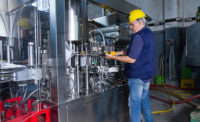The U.S. workforce is now composed of four generations: Baby Boomers, Gen X, Millennials, and Gen Z. Age ranges for these generations in 2019 were: boomers (55-73); Gen X (39-54); Millennials (23-38); and Gen Z (6-22).
Millennials are the largest segment of the U.S. workforce and will comprise 75 percent by the end this decade. The oldest of the Gen Z demographic are beginning to enter the workforce. Millennials and Gen Z are more socially conscious than older generations and are keen to seek change through activism. Research shows that 80 percent of millennials want to work for “engaged companies.”
Businesses are slowly moving in the direction of increased social responsibility. The traditional focus on increasing shareholder equity is expanding to address all of a company’s stakeholders’ demands by fostering diversity, inclusion, dignity and respect among the workforce; and environmental and climate change protection for communities and consumers. Early evidence suggests that this shift will move beyond lip service. “Green” investing on Wall Street is one driver.
OHS boomers
OHS pros are mainly boomers. The mean age of an U.S. OHS pro is 55, with one-third of pros older than age 60. Boomer pros advanced through their career with devotion and memorization to OSHA 29 CFR sections and equivalent regs. To many OHS boomers, if a hazard is not specifically governed by OSHA, its workplace health and safety significance is diminished or ignored. This logic gets infused and is hard to remove due to OHS boomers’ influence on their younger counterparts. It hinders movement toward a holistic approach to workplace health and safety -- including new concepts such as social responsibility and climate protection.
Greatest divide - family values
Family values is the greatest divide between boomer and younger OHS pros. Boomers’ biological clock to have children, except for the use of advanced technologies, has ended. Result? Until recently, the U.S. was the only country among 41 nations in the Organization for Economic Cooperation and Development (OECD) without federal paid leave for new parents. Workplace risk assessments for expecting parents, common among OECD countries, are practically non-existent in the US. Health impact? Among OECD countries, the U.S. ranks near the bottom in categories that include preterm births, low birthweight, birth defects, infant mortality, and maternal mortality.
It’s the Millennials’ turn to have children and they’re intolerant of the above BS. On January 1, 2020, Oregon became the 27th state/city within the past eight years to put into effect what is commonly called a pregnant worker fairness act (PWFA) law. President Trump did sign into law paid paternity leave for the federal workforce. By November 2020, more than two million federal workers will be eligible for paid leave for birth or adoption of a new child. Other businesses may need to match the feds’ paternity leave benefits to remain competitive for new hires.
In October 2019, a U.S. Congressional House subcommittee held hearings on H.R. 2694, PWFA. H.R 2694 has support (150 bill cosponsors by the end of 2019), with expected refined definitions for conditions such as “medical,” “common,” and “known limitations” of pregnancy; conditions that address workplace hazards at various times during pregnancy. House approval is expected by mid-2020. House passage will increase pressure on the Republican-held Senate to act. But the Senate is unlikely to approve H.R. 2694 – opting instead to ensure that existing laws including the ADA and FMLA effectively support today’s family-friendly values.
“OK BOOMER”
Memes, parodies and songs about “OK BOOMER” (usually written in caps to help enhance fading, aging eyesight) are growing for a reason. OHS boomers don’t understand younger peoples’ values, and younger people have grown tired of the boomers’ deathgrip on the past. Rather than argue with entrenched boomer views, younger people (and a few others) have come to shrug their shoulders and provide only the dismissive response, “OK BOOMER.” Boomer attitudes about the OHS future, such as being indifferent to PFWA laws and family-friendly workplace values, are becoming irrelevant. Younger U.S. OHS pros (and a few others) will impact needed change, with or without boomer support – leaning on business’ increasing emphasis on social responsibility.
OHS boomers are perplexed when they’re called out for being out-of-touch with modern workplace values. Mounting evidence barely sways their entrenched thinking. For example, the American Society of Safety Professionals (ASSP) is the largest U.S. OHS membership organization. Professional Safety is ASSP’s flagship publication. With growing Millennial enthusiasm for PWFA laws, how many times has the word “pregnant” appeared in PS’s monthly publications? I couldn’t find the word once among all the PS’s 2019 articles. ASSP’s industrial hygiene counterpart, AIHA, fares no better, from my observations.
Major U.S. OHS pro member organizations have little interest in PWFA law because they refuse to understand or appreciate the law’s intent. Why? U.S. OHS pros, and organizations that form the majority of members are mostly boomers hooked on all things OSHA. OSHA has no specifications, although the agency does have a few recommendations, for the safety of pregnant workers and the health of future children exposed to workplace hazards.
ISO 45001
One way to escape the OHS pro-boomer frame-of-mind is adoption of ISO 45001:2018 OHS management system thinking. The first and most important requirement of the standard is to understand the “context of the organization.” This includes appreciation and attention to the value, attitudes and beliefs of stakeholders, such as the growing interest in Millennial values as demonstrated within PWFA laws. ISO 45001 should drive more holistic health and safety conformance objectives with less reliance on OSHA compliance.
Changing OHS boomer pros’ views are difficult. An “OK BOOMER” response to affect change without their encouragement or support may be needed.


